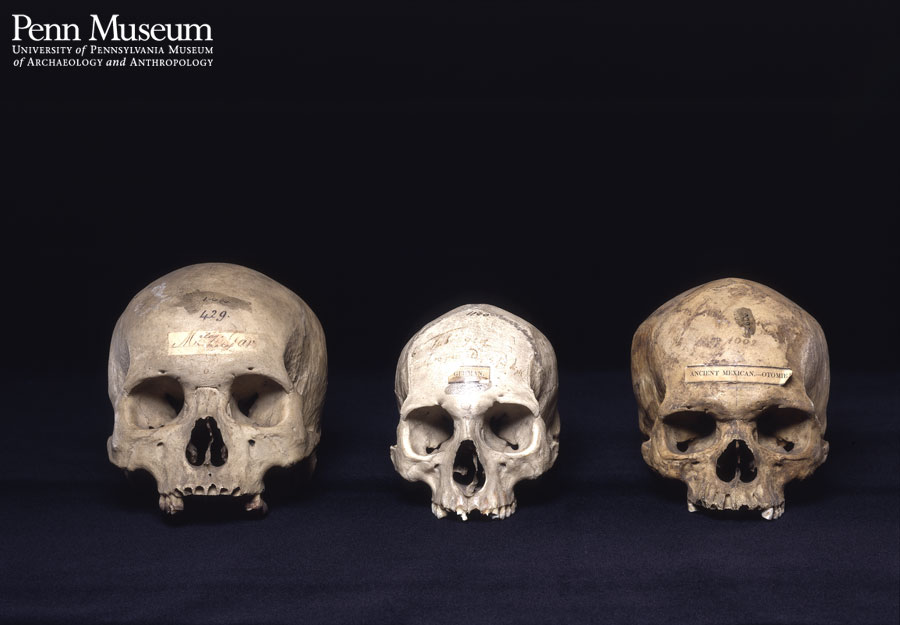Update on the Morton collection
For updates on the Museum’s work towards the repatriation and burial of the Morton Collection, please refer to this page.

and race.
While the Samuel George Morton crania collection has been part of the Museum since the mid-1960s, it has informed the fields of medicine, biology, and anthropology since the early 1800s. Morton’s special interest in crania may have stemmed from preparation for an 1830 lecture by the German anatomist Johann Friedrich Blumenbach, entitled “The Different Forms of the Skull as Exhibited in the Five Races of Men.” Indeed, the controversy surrounding the proposed biological basis of race has followed Morton’s collection ever since, in many cases resulting in incorrect findings. Morton, himself, determined that specimens belonging to the “Native African” group had the smallest cranial capacity of all the geographically circumscribed groups he measured. “Native African” was one of six geographical races identified by Morton: African, Asian, Australian, European, Native American, and Pacific Islander. Morton concluded that intelligence and racial superiority correspond to skull size, a theory for which he has been dubbed the “Father of Scientific Racism.” Indeed, his work was implicated as justification for slavery and racial oppression during the 19th century.
On a more positive note, the development of forensic anthropology is owed, in large part, to the Morton collection. Cranial patterns from the collection reveal that the roundness feature of head shape is more pronounced in northern Europe than it is in southern Africa; likewise, the physical size of crania increases with distance from the equator, in correspondence with cooler climates. CT scans of the collection, available to scholars, will be crucial for future research in this area. More on the Morton collection can be found at the Museum’s ongoing exhibition: Year of Proof: Making and Unmaking Race.
